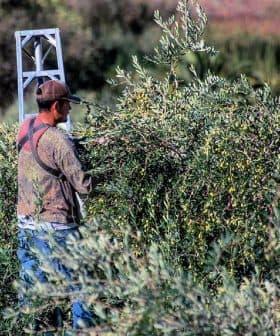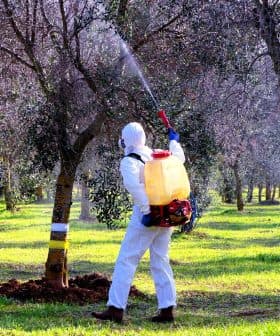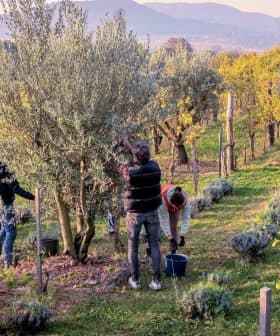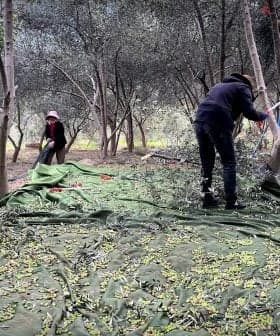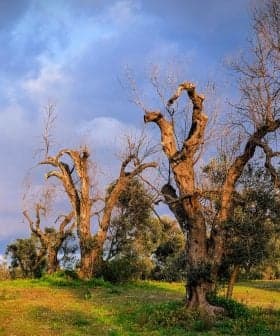New Blight Alarms California Olive Growers
The pathogen Neofabraea has been observed on both Arbosana and Arbequina trees in the Sacramento Valley, Glenn County and San Joaquin.
 Neofabraea (Photo: Olive Oil Commission of California)
Neofabraea (Photo: Olive Oil Commission of California)A new disease called Neofabraea is spreading among olive cultivars used for oil production in California, affecting Arbosana and Arbequina trees. Symptoms include defoliation, twig lesions, and leaf spots, and research is being conducted to develop strategies to control the disease and protect the booming California olive oil trade.
The California olive industry has been alerted to an alarming new disease that appears to be spreading among olive cultivars commonly used for oil production. At a recent board meeting of the Olive Oil Commission of California (OOCC), it was reported that the pathogen Neofabraea had been observed on both Arbosana and Arbequina trees.
It’s new to California and it’s alarming, for sure.
The disease is akin to “bulls eye rot” in apples and pears being grown in the pacific Northwest. The pathogen was previously identified by U.C. Davis researchers in Sonoma County on olive fruits at two commercial orchards in Sonoma County in 2013, affecting the Coratina and Picholine varietals.
The newly affected region includes the Sacramento Valley and Delta: Glenn County, just north of Sacramento, and San Joaquin County to the south. Symptoms include defoliation, twig lesions, and leaf spots, and both humid growing areas and El Nino appear to provide favorable environments for the disease.
“It’s new to California and it’s alarming, for sure,” said Florent Trouillas, a Cooperative Extension specialist in plant pathology at U.C. Davis. “It appeared out of nowhere. This is definitely something the industry needs to be prepared for.”
Trouillas said the research on Neofabraea, specifically focusing on olive oil olives, was initiated this past spring in the San Joaquin area where it hass been recurrent. “It’s quite serious when you find the disease has affected entire rows of trees. And we haven’t yet visited any groves where table olives are grown.”
The OOCC research committee is now into the problem and funding is likely to be sought to investigate the rot and its biology and come up with solid strategies that growers can implement to control it.
Given the devastation caused by the Xylella fastidiosa pathogen that has ravaged more than a million olive trees in southern Italy over the past two years, the booming California olive oil trade should be on high alert as more is learned about the new blight.




